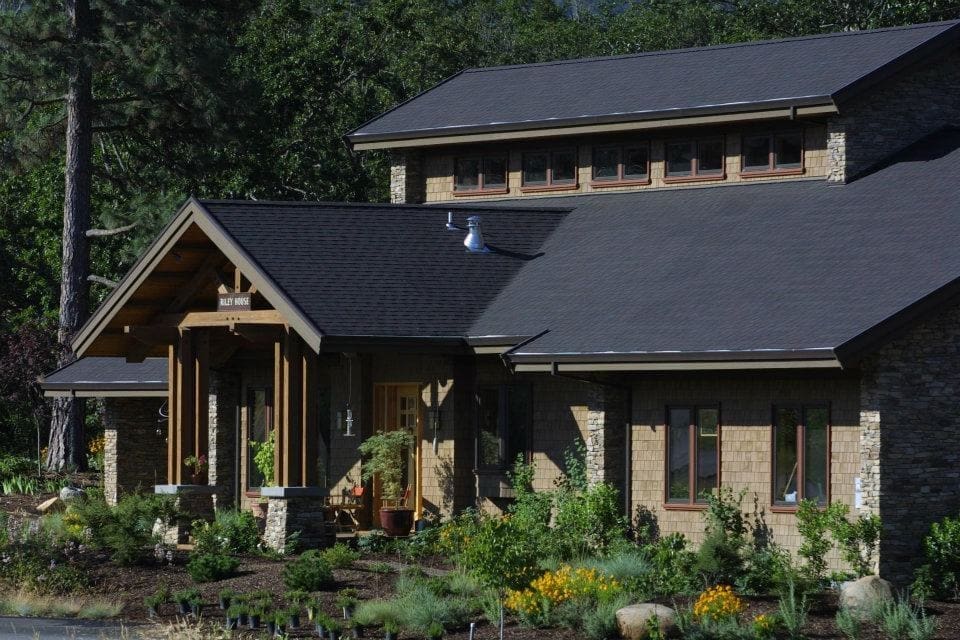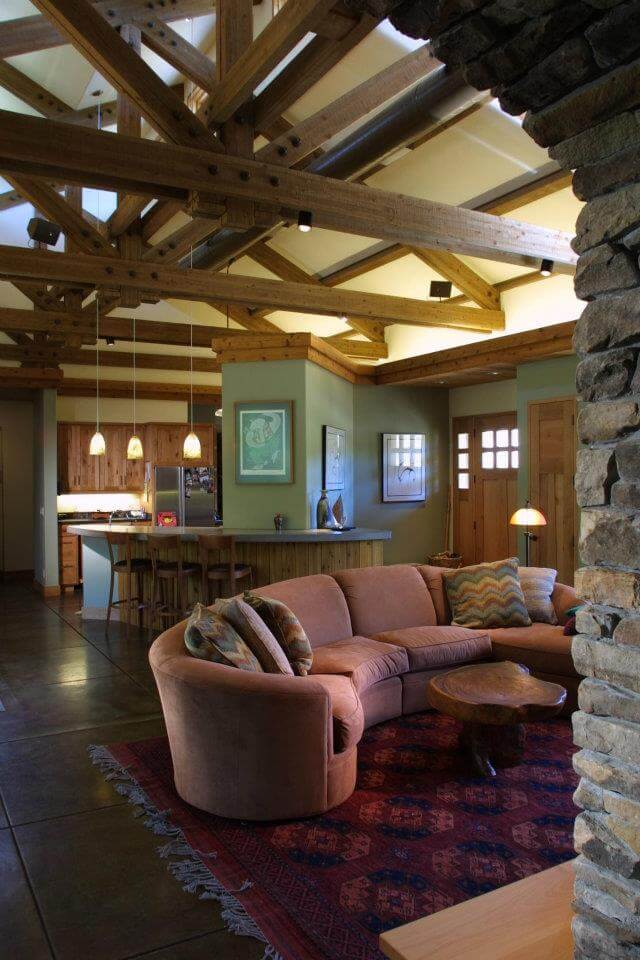Located just outside Ashland, Oregon, the Riley Residence, now fondly known as “The Stone House,” was originally designed as a comfortable retreat for a retired man and his visiting family with beautiful thermal mass construction. Today, it serves a new purpose as a charming local music venue—its inviting warmth and barn-inspired character making it a natural gathering place for community and creativity.
This project was another rewarding collaboration with Shostrum Brothers, LTD, blending the design talents of Dale Shostrum with the craftsmanship of Dean Shostrum. The home reflects a barn-style vernacular, characterized by rustic stonework, exposed heavy timber beams, and a raised clerestory that floods the interior with natural light and encourages cross ventilation.
The Power of Thermal Mass Construction
A key feature of the Stone House is its use of concrete floors and thick stone walls—materials prized for their thermal mass. Thermal mass refers to a material’s ability to absorb, store, and gradually release heat, creating a natural temperature-regulating effect that enhances comfort and energy efficiency.
Benefits of Thermal Mass in Residential Design
- Natural Cooling: During hot summer days, the dense stone walls and concrete floors absorb excess heat, keeping the interior cool without the need for air conditioning.
- Energy Efficiency: By moderating temperature fluctuations, thermal mass reduces reliance on mechanical heating and cooling systems, leading to long-term energy savings.
- Sustained Warmth in Winter: In cooler months, these materials capture heat from sunlight or internal sources and release it slowly, maintaining steady indoor warmth.
- Quiet and Durable: Stone and concrete provide excellent sound insulation and long-lasting structural integrity, contributing to a peaceful and enduring home environment.
- Aesthetic Appeal: Beyond performance, the natural materials lend the space timeless beauty—earthy textures and organic tones that connect the interior to its surrounding landscape.
With its careful balance of form, function, and craftsmanship, the Stone House stands as a testament to sustainable residential design, demonstrating how traditional materials and thoughtful architecture can create spaces that are both visually stunning and naturally efficient.





